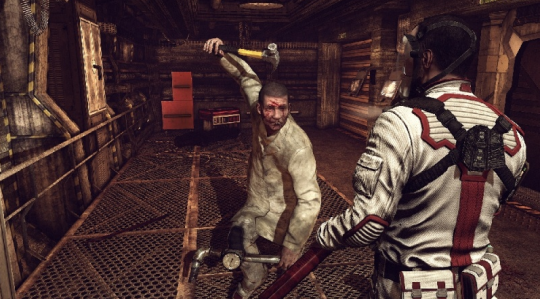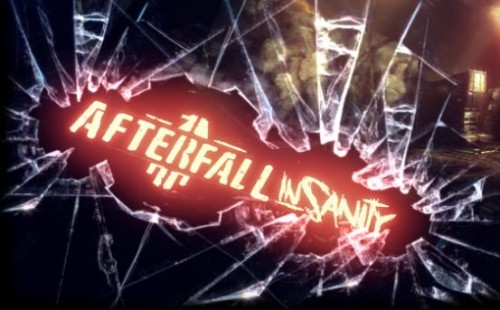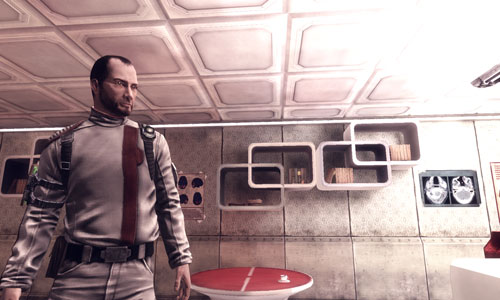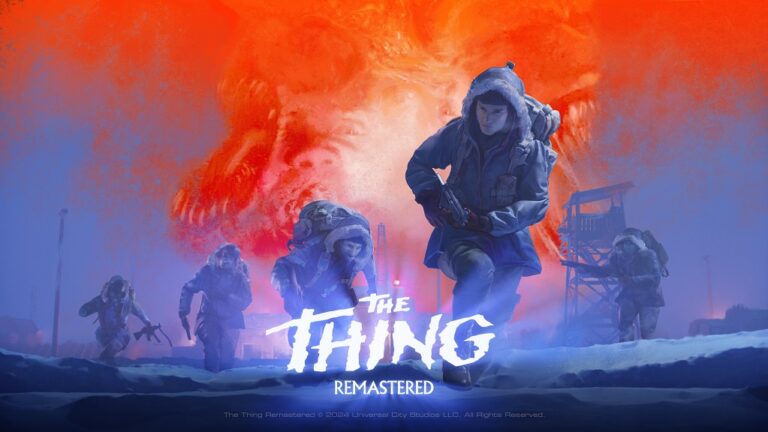Just when it seems like the big names in horror overlook what’s really scary, you can count on independent developers to stand and deliver. They might not always have all of the resources to have the most cutting-edge graphics, high-profile voice actors or the best soundtracks, but a lot of times they do know how to put out a good game. It’s that knowledge that oftentimes takes a small, relatively unknown developer to the top of the charts in the horror gaming industry in no time.
We recently had the opportunity to go hands on with a preview copy of Nicolas Games’ Afterfall: Insanity. In our two-chapter preview, we experienced first-hand only a small percentage of what Afterfall has to offer and to put it bluntly, we liked a lot of what we saw. And while some of it we hope gets a little bit of last-minute polish before the final release, Afterfall: Insanity is definitely a game that you should be keeping a keen eye out for.
We begin our preview in Shelter Glory, one of the last vestiges of mankind. It’s the not-so-distant future, and the last vestiges of mankind have taken to underground shelters. Now before you begin to wax Fallout on us, note that Shelter Glory is completely different to Vault 101. Gone is the relatively smooth cohesion between shelter residents, and in is a very real Confinement Syndrome. The place is dark, gritty and undeniably creepy.
Despite Afterfall being from an indie developer, the game looks pretty good. We had a couple of frame-rate issues with the title, even while running on a higher end PC while running FRAPS in the background. Even though these little hiccups really aren’t anything to get your panties in a bind over, we do hope that they get ironed out with a post-release patch.
Dr. Albert Tokaj is the lead psychologist/pharmacologist for the shelter. In the intro we’re treated to one of Tokaj’s sessions with a patient. We learned more than he did, as the good doctor is getting some good shut-eye. When the patient finds out, she promptly lets him know exactly what she thinks of his sessions, and his therapy. This seems to be a general theme that Tokaj has – everybody seems to hate the guy just for doing his job – helping them.
When we find our way out of Tokaj’s room and office we get a feel for the controls. PC controls are standard fare, but there’s also 360 controller support. Unfortunately, in our preview copy the game didn’t seem to play nice with custom key-bindings, even though the option is available through the menu. We really hope that this gets smoothed over with a post-release patch, because some of the controls are a little on the clunky side, especially in the area of combat, and those who use a speed-pad (like the Razer n52TE) like our custom key-bindings.
The combat in Afterfall is kind of a mixed bag. The game is melee heavy, throwing everything at you from hammers, gigantic wrenches and brooms to beat off attackers. However, there’s a wide variety of firearms available should you choose to go that route. Dodging, blocking and kicking add to the mix and if all else fails you can boot it to another side of the room and prepare for next attack. After each move, a stamina bar shows up onscreen. Run out of stamina – run out of moves. Tokaj isn’t a soldier – he isn’t a fighter, and it shows. Is that a bad thing? Maybe for some, but it holds true to the feel of the game – dammit he’s a doctor, not a killer!
Oh…scratch that last comment there.
Before long, Tokaj is being sent on a mission to another level of the shelter, the second sublevel. We’re guessing the shelter levels work like a class-level structure, but we could be wrong. What’s clear however is that something is really wrong on the second sublevel. Tokaj believes it’s Confinement Syndrome, something he’s studied long and hard about, perfecting his analysis and studies on the subject. But if this is Confinement Syndrome…we fear for the future.

“IT’S BEEN SO LONG SINCE I’VE SEEN THE SUN!!”
Throughout our preview we were treated to a number of different puzzles, ranging from hacking mini games to preventing a reactor from overheating. The puzzles were relatively simple so early in the game, but they’re a welcome addition to a genre that seems to be trending more and more towards the action route.
What’s interesting about Albert Tokaj and his Confinement Syndrome is that he’s not immune to the affects of it himself. How this affects his perspective and ultimately how you’ll play the game remains to be seen. In one particular area, a seemingly uninteresting corridor transforms into what looks like a gothic church’s basement, complete with Virgin Mary statues, caskets, and the sounds of crying women echoing throughout.
The protagonist being seriously affected by disturbing events is something that we’ve seen in other games before, and quite frankly – we like it. In Afterfall, it’s known as Fear Lock. Fear Lock shows up as blurred vision, a decrease in aim, hallucinations, but an increase in physical strength. This lends a whole new, more authentic dimension to Tokaj’s character. Not only as someone who’s traversing dark corridors, solving puzzles and bashing heads in, but someone who is genuinely losing their mind.
Afterfall: Insanity will be receiving an official demo on PC on November 15, 2011 (hehey, that’s tomorrow!). If you’re interested, check it out! The game will be available for not just the PC, but the Playstation 3 and the Xbox 360 as well. You can bet that Afterfall is a game we’re definitely itching to see more of.






